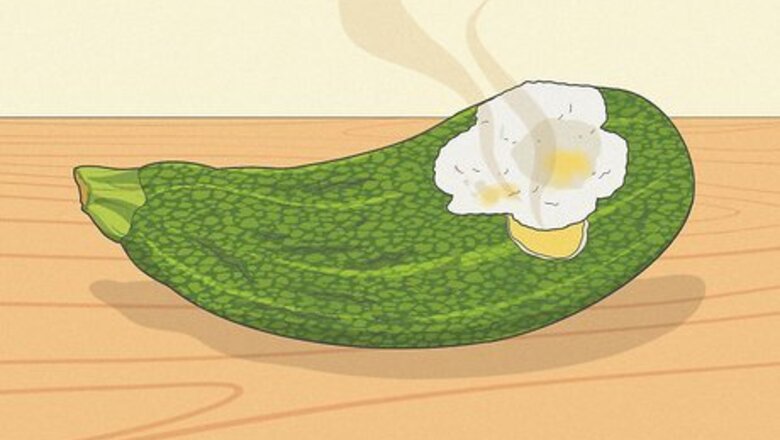
views
- If you see mold, black spots, browning, yellowing, shriveling, or wrinkling on the skin of your zucchini, it has likely gone bad.
- A soft, mushy, or slimy texture also indicates spoilage.
- When picking zucchini at the store, look for smooth, blemish-free skin with a vibrant dark green color. Squeeze the zucchini gently to make sure it's firm.
Signs Zucchini Has Gone Bad
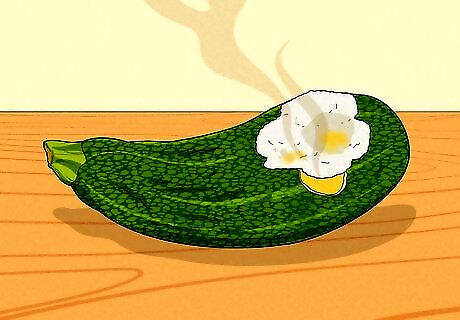
Avoid zucchini with dark or soft spots, wrinkles, or mushiness. These signs can indicate that your zucchini is past its prime, and it may be safest to throw it away: Mold or black spots: If your zucchini has a few dark spots but no mold, cut off the damaged areas and use the zucchini right away. If your zucchini does have mold, toss it. Wrinkly skin: A spoiled zucchini’s skin may look wrinkly or shriveled like a prune. Discoloration: Yellowing or browning on zucchini are signs of aging and spoilage. Soft spots: Pick up your zucchini and assess it for firmness. If it feels very soft or mushy when you squeeze it, it has likely gone bad. Mushy texture: A spoiled zucchini has a mushy or stringy texture when you cut it, and it may feel slimy to the touch. "Off" smell or taste: If your zucchini smells sour or foul in any way, or if it tastes unusually bitter, it has likely gone bad.
Choosing Good Zucchini
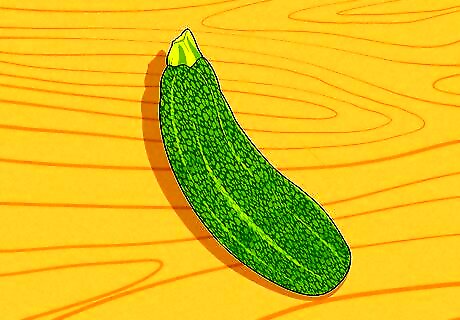
Choose vibrant green, firm, blemish-free zucchini to ensure freshness. When you’re picking out zucchini at the store or the farmer’s market, carefully assess it for signs of aging or spoilage, so that you’re not disappointed when you try to use it later. Here are the things to look for: Bright green color: Look for zucchinis with vibrant, shiny, deep green skin. This indicates that your zucchini is fresh and was recently picked. Intact stem: The stem should not be shriveled, and it should bend slightly (but not snap) when you push on it. Smooth, blemish-free skin: Inspect the zucchini to make sure there are no dark spots, mold, wrinkling, or shriveling. Avoid zucchinis with any nicks or cuts, as this can speed up spoilage. Firmness: Pick up the zucchini and gently squeeze it to make sure it’s firm. It doesn’t need to be rock hard, but it shouldn’t be mushy or soft when you press on it.

Look for small or medium-sized zucchinis (about 6 in (15 cm) long). Bigger doesn't mean better when it comes to a zucchini’s taste. When zucchini grows for too long on the vine, it develops a mushier center, tougher skin, and a more bitter taste. Smaller zucchinis tend to be more tender and flavorful. Choose zucchinis that are around 6 in (15 cm) in length for the best taste and quality.
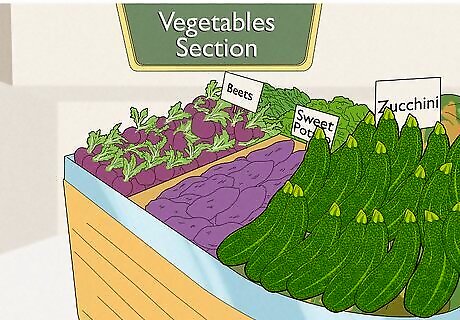
Buy fresh zucchini from local farmer’s markets when possible. According to Sasha Reyes, Executive Chef and owner of Artisan Personal Chefs, you can’t beat the quality and taste of locally produced veggies. “Support your local farmer’s market,” she says. “You’re going to be doing yourself a favor in the long run by having fresher seasonal vegetables and fruits, and you’re also going to be helping to support small local businesses.”
How to Store Zucchini

Store whole zucchini at room temperature for 3-5 days. Fresh, whole zucchini can be kept on the counter in a cool, dry place for 3-5 days. To prevent premature spoilage, keep the temperature your kitchen cool, and make sure your zucchini isn’t underneath direct sunlight.
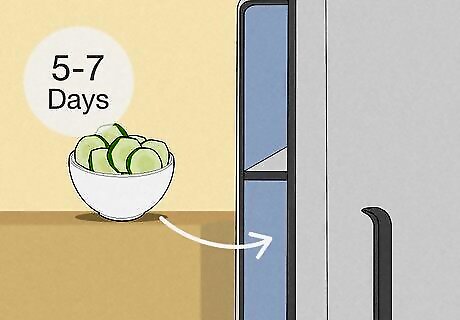
Store cut zucchini in the fridge to keep it fresh for 5-7 days. Cut zucchini lasts in the fridge for around 5-7 days. Chef Sasha Reyes recommends placing your zucchini slices in a Ziploc bag before popping them in the fridge. Refrigerate zucchini within 2 hours after cutting, peeling, or shredding it.

Store zucchini in the freezer to keep it fresh for up to 6 months. Before freezing your zucchini, chop and blanch it. This ensures that your zucchini will have the same delicious taste and firm texture when you eventually thaw it. Bring a large pot of water to a boil, and fill a large bowl with cold water and ice. Carefully drop your zucchini slices into the boiling water. Cook for 1-3 minutes. The slices should be bright green and still firm. Take the zucchini out of the boiling water and immediately place it into the ice bath. Gently stir the water to cool the zucchini, then pour into a colander to drain. Lay your zucchini out on a baking sheet lined with parchment paper, and blot with paper towels until they are completely dry. Place the baking sheet in your freezer for 2-4 hours, until the zucchini is frozen solid. Transfer the zucchini to Ziploc bags, and squeeze out as much air as possible. Seal the bags and store them in the freezer.
Reasons Zucchini is Going Bad in Your Garden
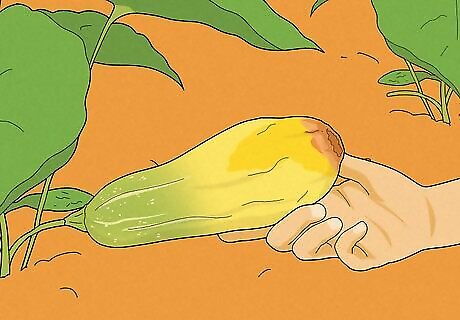
Blossom-end rot If you’re noticing dark, spoiled-looking spots when you grow your own zucchini, blossom-end rot may be to blame. This occurs when homegrown veggies are deficient in calcium, which causes the blossom end (or bottom) of the zucchini to become dark, softened, or bruised. Blossom-end rot is caused by lack of water or inconsistent watering, which prevents the zucchini plant from accessing calcium in the soil. To avoid blossom-end rot, make sure your zucchini gets enough water consistently throughout the growing season.

Poor pollination When the female flowers of a zucchini plant are not pollinated, the zucchini can’t grow and may rot quickly. Poor pollination occurs when there aren't enough bees in your garden due to pesticides, cold temperatures, rain, or plants being too spaced out from each other. Try to plant clusters of flowering plants near each other in your garden. This attracts more bees. If cold or rainy weather is keeping bees away, try to pollinate your plants by hand. Use a small paintbrush to collect pollen from the male flower’s stamen, then transfer this pollen to the female plant’s pistil. Repeat every other day for 1 week.
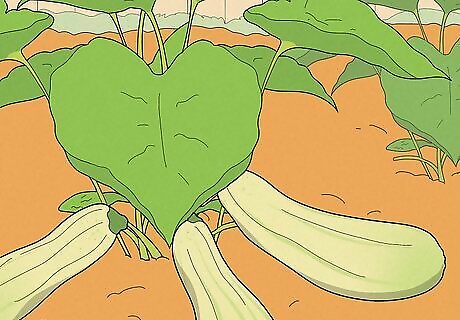
Harvesting too late Letting your zucchini grow too long on the vine can have a negative effect on taste and texture. Larger zucchinis tend to have mushier center, tougher skin, and a watery, bitter taste. Don't wait too long to harvest your zucchini! Once your zucchini is about 6 in (15 cm) long, it is ready to pick and eat.
Zucchini Recipe Ideas
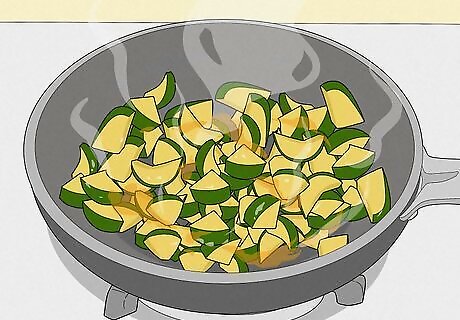
Sautée zucchini for a simple, delicious side dish. Cut your zucchini into slices, and add butter or oil to a skillet over medium heat. Next, add in the zucchini slices and cook until tender, stirring occasionally. Season your zucchini with any desired spices, such as salt, pepper, or garlic powder. Stir for one more minute, then remove from the heat and enjoy!
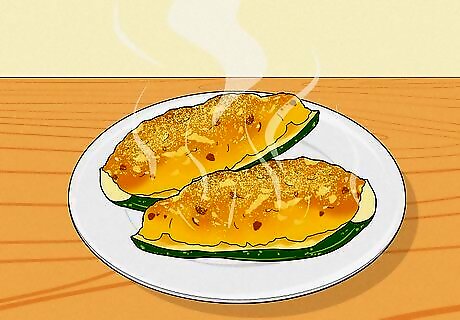
Try out other zucchini recipes. Zucchini is an incredibly versatile vegetable that tastes amazing in a variety of dishes. Here are a few more recipes to try! Put a healthy spin on traditional spaghetti dishes with these delicious zucchini noodle (or “zoodle”) recipes. Show off your baking skills with this sweet zucchini bread recipe. Get creative with these hearty stuffed zucchini recipes. Try something a bit more decadent with these yummy recipes for zucchini fries. Enjoy with marinara sauce or ranch dressing!




















Comments
0 comment